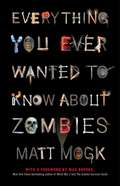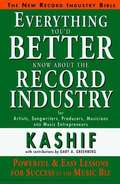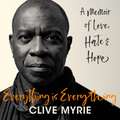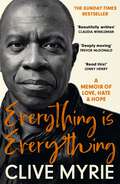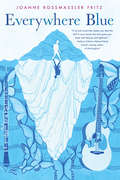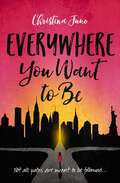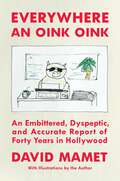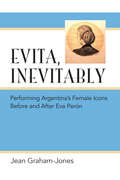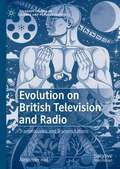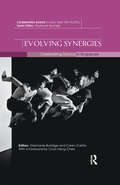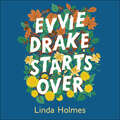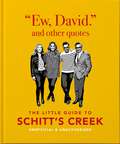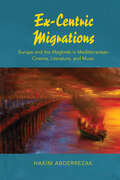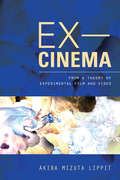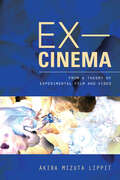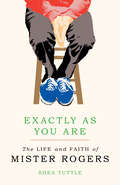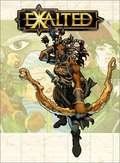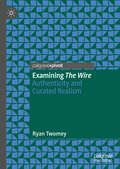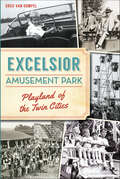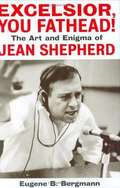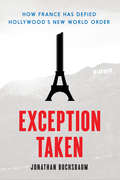- Table View
- List View
Everything You Ever Wanted to Know About Zombies
by Matt MogkThe most comprehensive zombie handbook ever published--with a foreword by Max Brooks! In one indispensable volume, Matt Mogk busts popular myths and answers all your raging questions about the living dead.*Q. How can I increase my chances of survival? A. One simple step is to keep away from other people. Without people there can be no zombies. Q. What is the connection between the Voodoo zombie and the flesh-eating zombie of popular culture? A. Other than a shared name, absolutely nothing. Q. Will zombies actually eat me, or will they just bite and chew? A. Research suggests the neuromuscular activity required for swallowing may be too complex for a zombie. Q. Will we see any warning signs before the dead rise? A. Unfortunately, entire populations could be infected with the zombie sickness before anyone even knows there's a problem. Q. How come Zombie Awareness Month is in May and not October? A. Unlike witches and vampires, zombies are not otherworldly creatures. They are made of flesh and blood. Don't forget to wear your gray ribbon. * Many more questions about zombies--including why not all of them are undead--are answered inside the book.
Everything You Ever Wanted to Know About Zombies
by Matt MogkTHE MOST COMPREHENSIVE ZOMBIE HANDBOOK EVER PUBLISHED In one indispensable volume, Matt Mogk, founder and head of the Zombie Research Society, busts popular myths and answers all your raging questions about the living dead.* Q. How can I increase my chances of survival? A. One simple step is to keep away from other people. Without people there can be no zombies. Q. What is the connection between the Voodoo zombie and the flesh-eating zombie of popular culture? A. Other than a shared name, absolutely nothing. Q. Will zombies actually eat me, or will they just bite and chew? A. Research suggests the neuromuscular activity required for swallowing may be too complex for a zombie. Q. Will we see any warning signs before the dead rise? A. Unfortunately, entire populations could be infected with the zombie sickness before anyone even knows there's a problem. Q. How come Zombie Awareness Month is in May and not October? A. Unlike witches and vampires, zombies are not otherworldly creatures. They are made of flesh and blood. Don't forget to wear your gray ribbon. * Many more questions about zombies--including why not all of them are undead--are answered inside the book.
Everything You'd Better Know About The Record Industry
by Kashif Gary A. GreenbergFor everyone from the serious musician to parents who have kids that have an interest in becoming professionals in the record industry. It's easy to read and understand. Written to give producers, artists, performers, and music entrepreneurs an inspiring view into the way things should be done in the record industry. Everything You'd Better Know About the Record Industry is about how to find success in the music business and how to make money doing it. It answers all the questions one would have about making it, but more importantly, its answers questions about the record industry that you don't even know to ask.
Everything is Everything: A Memoir of Love, Hate & Hope
by Clive Myrie'I've realised that my skin colour, and the sensibilities acquired living in a white dominated world, have given me an interesting perspective on a myriad of topics and issues... So Everything is Everything is about the intersection of the personal and the professional and what I've learned. There is tough stuff, but also hope.'As a Bolton teenager with a paper round Clive Myrie read all the newspapers he delivered from cover to cover, and dreamed of becoming a journalist. Thirty years on, he's reported from more than ninety countries for the BBC. In this deeply personal memoir, he reflects on how being black has affected his perspective on the myriad issues he's encountered in reporting some of the biggest stories of our time. Clive's empathy for the individual caught up in large historical events is widely recognised. He tells how his family history has influenced his view of the world, introducing us to his Windrush generation parents, a great grandfather who helped build the Panama Canal, and a great uncle who fought in the First World War and later became a prominent police detective in Jamaica. In Everything is Everything, he shows how his own life experience might afford a better idea of what it means to be an outsider. He tells us of his pride in his roots, but his determination not to be defined by his background in dealing with the challenges of race and class, to succeed at the highest level. Moving, engaging, revealing, Everything is Everything is a story of both love and hate - but also hope.(P) 2023 Hodder & Stoughton Limited
Everything is Everything: The Top 10 Bestseller
by Clive Myrie'Infinitely more readable than the average journalism memoir, and decidedly more important.' - Sathnam Sanghera, The Times'So engaging. You feel as if he is talking to you, sharing ideas and thoughts, as if you were a friend.' - Yasmin Ahlibai-BrownAs a Bolton teenager with a paper round, Clive Myrie read all the newspapers he delivered from cover to cover and dreamed of becoming a journalist. In this deeply personal memoir, he tells how his family history has influenced his view of the world, introducing us to his Windrush generation parents, a great grandfather who helped build the Panama Canal, and a great uncle who fought in the First World War, later to become a prominent police detective in Jamaica.He reflects on how being black has affected his perspective on issues he's encountered in thirty years reporting some of the biggest stories of our time (most recently from Ukraine), showing us how those experiences gave him a better idea of what it means to be an outsider. He tells of his pride in his roots, but his determination not to be defined by his background in dealing with the challenges of race and class to succeed at the highest level. Moving, engaging, revealing, Everything is Everything is a story of love and hate - but also hope.
Everything is Everything: The Top 10 Bestseller
by Clive Myrie'Infinitely more readable than the average journalism memoir, and decidedly more important.' - Sathnam Sanghera, The Times'So engaging. You feel as if he is talking to you, sharing ideas and thoughts, as if you were a friend.' - Yasmin Ahlibai-BrownAs a Bolton teenager with a paper round, Clive Myrie read all the newspapers he delivered from cover to cover and dreamed of becoming a journalist. In this deeply personal memoir, he tells how his family history has influenced his view of the world, introducing us to his Windrush generation parents, a great grandfather who helped build the Panama Canal, and a great uncle who fought in the First World War, later to become a prominent police detective in Jamaica.He reflects on how being black has affected his perspective on issues he's encountered in thirty years reporting some of the biggest stories of our time (most recently from Ukraine), showing us how those experiences gave him a better idea of what it means to be an outsider. He tells of his pride in his roots, but his determination not to be defined by his background in dealing with the challenges of race and class to succeed at the highest level. Moving, engaging, revealing, Everything is Everything is a story of love and hate - but also hope.
Everywhere Blue
by Joanne Rossmassler FritzA brother's disappearance turns one family upside down, revealing painful secrets that threaten the life they've always known. When twelve-year-old Maddie's older brother vanishes from his college campus, her carefully ordered world falls apart. Nothing will fill the void of her beloved oldest sibling. Meanwhile Maddie's older sister reacts by staying out late, and her parents are always distracted by the search for Strum. Drowning in grief and confusion, the family's musical household falls silent. Though Maddie is the youngest, she knows Strum better than anyone. He used to confide in her, sharing his fears about the climate crisis and their planet's future. So, Maddie starts looking for clues: Was Strum unhappy? Were the arguments with their dad getting worse? Or could his disappearance have something to do with those endangered butterflies he loved . . .Scared and on her own, Maddie picks up the pieces of her family's fractured lives. Maybe her parents aren't who she thought they were. Maybe her nervous thoughts and compulsive counting mean she needs help. And maybe finding Strum won't solve everything--but she knows he's out there, and she has to try. This powerful debut novel in verse addresses the climate crisis, intergenerational discourse, and mental illness in an accessible, hopeful way. With a gorgeous narrative voice, Everywhere Blue is perfect for fans of Eventown and OCDaniel.
Everywhere You Want to Be
by Christina JuneFrom author Christina June comes Everywhere You Want to Be, a modern retelling of the Red Riding Hood story.Matilda Castillo has always done what she was told, and as a result she watched her dreams of becoming a contemporary dancer slip away. So when Tilly gets a once-in-a-lifetime opportunity to spend the summer with a New York dance troupe, nothing can stop her from saying yes—not her mother, not her fears of the big city, and not the commitment she made to Georgetown. Tilly’s mother allows her to go on two conditions: one, Tilly will regularly visit her abuela in New Jersey, and two, after the summer, she’ll give up dancing and go off to college. <P><P>Armed with her red vintage sunglasses and her pros and cons lists, Tilly strikes out, determined to turn a summer job into a career. Along the way she meets new friends … and new enemies. Tilly isn’t the only one desperate to dance, and fellow troupe member Sabrina Wolfrik intends to succeed at any cost. But despite dodging sabotage and blackmail attempts from Sabrina, Tilly can’t help but fall in love with the city, especially since Paolo, a handsome musician from her past, is also calling New York home for the summer.As the weeks wind down and the competition with Sabrina heats up, Tilly’s future is on the line. She must decide whether to follow her mother’s path to Georgetown or leap into the unknown to pursue her own dreams.
Everywhere an Oink Oink: An Embittered, Dyspeptic, and Accurate Report of Forty Years in Hollywood
by David MametAward-winning playwright, screenwriter, and director David Mamet shares his &“smart, addictive, hilarious, and insightful&” (Breitbart) tales from his four decades in Hollywood where he worked with some of the biggest names in movies.David Mamet went to Hollywood on top—a super successful playwright summoned west in 1980 to write a vehicle for Jack Nicholson. He arrived just in time to meet the luminaries of old Hollywood and revel in the friendship of giants like Paul Newman, Mike Nichols, Bob Evans, and Sue Mengers. Over the next forty years, Mamet wrote dozens of scripts, was fired off dozens of movies, and directed eleven himself. In Everywhere an Oink Oink, he revels of the taut and gag-filled professionalism of the film set. He depicts the ever-fickle studios and producers who piece by piece eat the artists alive. And he ponders the art of filmmaking and the genius of those who made our finest movies. With the bravado and flair of Mamet&’s best theatrical work, this memoir describes a world gone by, some of our most beloved film stars with their hair down, and how it all got washed away by digital media and the woke brigade. The book is illustrated throughout with three-dozen of Mamet&’s pungent cartoons and caricatures. Everywhere an Oink Oink is &“nothing but wicked jokes, angry broadsides, and pointed gossip: in other words, the ideal Hollywood book&” (The Wall Street Journal).
Evita, Inevitably: Performing Argentina's Female Icons Before and After Eva Perón
by Jean Graham-JonesEvita, Inevitably sheds new light on the history and culture of Argentina by examining the performances and reception of the country's most iconic female figures, in particular, Eva Perón, who rose from poverty to become a powerful international figure. The book links the Evita legend to a broader pattern of female iconicity from the mid-nineteenth century onward, reading Evita against the performances of other female icons: Camila O'Gorman, executed by firing squad over her affair with a Jesuit priest; Difunta Correa, a devotional figure who has achieved near-sainthood; cumbia-pop performer Gilda; the country's patron saint, the Virgin of Luján; and finally, Argentina's president, Cristina Fernández de Kirchner. Employing the tools of discursive, visual, and performance analysis, Jean Graham-Jones studies theatrical performance, literature, film, folklore, Catholic iconography, and Internet culture to document the ways in which these "femicons" have been staged.
Evolution on British Television and Radio: Transmissions and Transmutations (Palgrave Studies in Science and Popular Culture)
by Alexander HallThis book charts the history of how biological evolution has been depicted on British television and radio, from the first radio broadcast on evolution in 1925 through to the 150th anniversary of Charles Darwin’s Origin of the Species in 2009. Going beyond science documentaries, the chapters deal with a broad range of broadcasting content to explore evolutionary themes in radio dramas, educational content, and science fiction shows like Doctor Who. The book makes the case that the dominant use in science broadcasting of the ‘evolutionary epic’, a narrative based on a progressive vision of scientific endeavour, is part of the wider development of a standardised way of speaking about science in society during the 20th century. In covering the diverse range of approaches to depicting evolution used in British productions, the book demonstrates how their success had a global influence on the genres and formats of science broadcasting used today.
Evolving Synergies: Celebrating Dance in Singapore (Celebrating Dance in Asia and the Pacific)
by Stephanie Burridge Caren CariñoA comprehensive overview of the dance culture of Singapore, this book embodies storytelling, personal reflections, memories, and histories of the artists. The extensive calendar of events encompassing companies and soloists from diverse dance practices, such as Indian, Malay and Chinese and a variety of Western contemporary dances, underline Singapore as a vibrant player in the evolution of Asian culture.
Evvie Drake Starts Over: the perfect cosy season read for fans of Gilmore Girls
by Linda HolmesWhen you get a second chance, will you be brave enough to take it? You don't always get to start your life over. Sometimes, life starts itself over for you. One morning, Eveleth 'Evvie' Drake got up, packed her suitcase, and got ready to leave her life - and her perfect husband - behind. But before she walked out of the door, she received a phone call asking her to come to the hospital. That day, Evvie's new life as a widow began. Now wrestling with her guilt and grief, Evvie has found her independence, but not the way she planned. Unable to leave the house she once dreamed of escaping, it's clear to her best friend Andy that Evvie needs a change. And Andy might just have the answer. . . Dean Tenney was a big-shot baseball star, until a bad case of the 'yips' meant he couldn't play anymore - or understand why. An invitation from his childhood friend Andy to stay in Maine for a few months seems like the perfect chance to hit the reset button. When Dean moves into the apartment at the back of Evvie's house, the two make a deal: Dean won't ask about Evvie's late husband, and Evvie won't ask about Dean's baseball career. But rules have a funny way of being broken sometimes, and as a friendship evolves into something more, will Evvie and Dean be brave enough to let go of the past and start over again?'Charming, hopeful, and gently romantic . . . Evvie Drake is great company.' Rainbow Rowell(c)2019 Penguin Random House Audio
Ew, David, and Other Schitty Quotes: The Little Guide to Schitt's Creek
by Orange Hippo!Ew, David!Schitt's Creek and the Rose family have entered the hearts and homes of viewers all over the world. The heartwarming sitcom follows the newly destitute magnate Johnny Rose, his wife, eccentric soap opera actress Moira, and their two adult children, the pretentious David and jet-setting socialite Alexis, as they set up in Schitt's Creek, a town they once bought as a joke. Now for the first time, the wisecracks, melodrama, relationship advice and gratuitous celebrity name-drops have all been gathered in one place.Ew, David, and Other Schitty Quotes contains over 150 of the finest quotes from the most infamous riches-to-rags story a small town has ever seen. From side-splitting bickering between David and Alexis and Roland Schitt's political wisdom to Johnny Rose's solid business advice and of course, Moira's many regaling turns of phrase. Whether you need a pick-me-up or a well-timed put-down, let the eclectic cast of Schitt's Creek guide you on your way. Love that journey for us.'I'm trying very hard not to connect with people right now.' David Rose on his emotional state.'David, stop acting like a disgruntled pelican.' Moira asked David to be polite in her unique manner.
Ew, David, and Other Schitty Quotes: The Little Guide to Schitt's Creek
by Orange Hippo!Ew, David!Schitt's Creek and the Rose family have entered the hearts and homes of viewers all over the world. The heartwarming sitcom follows the newly destitute magnate Johnny Rose, his wife, eccentric soap opera actress Moira, and their two adult children, the pretentious David and jet-setting socialite Alexis, as they set up in Schitt's Creek, a town they once bought as a joke. Now for the first time, the wisecracks, melodrama, relationship advice and gratuitous celebrity name-drops have all been gathered in one place.Ew, David, and Other Schitty Quotes contains over 150 of the finest quotes from the most infamous riches-to-rags story a small town has ever seen. From side-splitting bickering between David and Alexis and Roland Schitt's political wisdom to Johnny Rose's solid business advice and of course, Moira's many regaling turns of phrase. Whether you need a pick-me-up or a well-timed put-down, let the eclectic cast of Schitt's Creek guide you on your way. Love that journey for us.'I'm trying very hard not to connect with people right now.' David Rose on his emotional state.'David, stop acting like a disgruntled pelican.' Moira asked David to be polite in her unique manner.
Ex-Centric Migrations: Europe and the Maghreb in Mediterranean Cinema, Literature, and Music
by Hakim Abderrezak“Plunges the reader into a tour de force across radically divergent artistic responses to Mediterranean migration.” —Bulletin of Francophone Postcolonial StudiesEx-Centric Migrations examines cinematic, literary, and musical representations of migrants and migratory trends in the western Mediterranean. Focusing primarily on clandestine sea-crossings, Hakim Abderrezak shows that despite labor and linguistic ties with the colonizer, migrants from the Maghreb (Morocco, Algeria, and Tunisia) no longer systematically target France as a destination, but instead aspire toward other European countries, notably Spain and Italy. In addition, the author investigates other migratory patterns that entail the repatriation of émigrés. His analysis reveals that the films, novels, and songs of Mediterranean artists run contrary to mass media coverage and conservative political discourse, bringing a nuanced vision and expert analysis to the sensationalism and biased reportage of such events as the Mediterranean maritime tragedies.“Ex-Centric Migrations is crucial reading for scholars and students of contemporary Maghrebi, French, and Spanish literatures and cultures. It breaks new ground by encompassing the literature, film, and music of ‘return migration’ and examining the trajectories of Maghrebi migration outside France.” —H-France“Hakim Abderrezak convincingly illustrates how politically committed artistic practices serve to humanize the challenges of human migration, and in the process dramatically improves our understanding of the complex cultural, economic, political, and social realities that shape 21st-century existence.” —Dominic Thomas, author of Africa and France: Postcolonial Cultures, Migration, and Racism
Ex-Cinema
by Akira Mizuta LippitWhat does it mean for film and video to be experimental? In this collection of essays framed by the concept "ex-"--meaning from, outside, and no longer--Akira Mizuta Lippit explores the aesthetic, technical, and theoretical reverberations of avant-garde film and video. Ex-Cinema is a sustained reflection on the ways in which experimental media artists move outside the conventions of mainstream cinema and initiate a dialogue on the meaning of cinema itself.
Ex-Cinema: From a Theory of Experimental Film and Video
by Akira LippitWhat does it mean for film and video to be experimental? In this collection of essays framed by the concept "ex-"—meaning from, outside, and no longer—Akira Mizuta Lippit explores the aesthetic, technical, and theoretical reverberations of avant-garde film and video. Ex-Cinema is a sustained reflection on the ways in which experimental media artists move outside the conventions of mainstream cinema and initiate a dialogue on the meaning of cinema itself.
Exactly as You Are: The Life and Faith of Mister Rogers
by Shea TuttleWelcome to the spiritual neighborhood of Fred Rogers“I like you as you are Exactly and precisely I think you turned out nicely And I like you as you are.”Fred Rogers fiercely believed that all people deserve love. This conviction wasn’t simply sentimental: it came directly from his Christian faith. God, he insisted, loves us just the way we are. In Exactly as You Are, Shea Tuttle looks at Fred Rogers’s life, the people and places that made him who he was, and his work through Mister Rogers’ Neighborhood. She pays particular attention to his faith—because Fred Rogers was a deeply spiritual person, ordained by his church with a one-of-a-kind charge: to minister to children and families through television. Tuttle explores this kind, influential, sometimes surprising man: the neighborhood he came from, the neighborhood he built, and the kind of neighbor he, by his example, calls all of us to be. Throughout, Tuttle shows how he was guided by his core belief: that God loves children, and everyone else, exactly as they are.
Exactly as You Are: The Life and Faith of Mister Rogers
by Shea TuttleWelcome to the spiritual neighborhood of Fred Rogers&“I like you as you are Exactly and precisely I think you turned out nicely And I like you as you are.&”Fred Rogers fiercely believed that all people deserve love. This conviction wasn&’t simply sentimental: it came directly from his Christian faith. God, he insisted, loves us just the way we are. In Exactly as You Are, Shea Tuttle looks at Fred Rogers&’s life, the people and places that made him who he was, and his work through Mister Rogers&’ Neighborhood. She pays particular attention to his faith—because Fred Rogers was a deeply spiritual person, ordained by his church with a one-of-a-kind charge: to minister to children and families through television. Tuttle explores this kind, influential, sometimes surprising man: the neighborhood he came from, the neighborhood he built, and the kind of neighbor he, by his example, calls all of us to be. Throughout, Tuttle shows how he was guided by his core belief: that God loves children, and everyone else, exactly as they are.
Exalted
by Geoff Grabowski Christopher MoellerIt is the second Age of Man, the age before the world turned. The Empire of the Dragon-Blooded -- an invincible colossus -- stands astride the ruins of the First Age. For millennia, the scarlet Empress held the world in her steel grip. But the empress is no more, and the Realm spirals toward chaos and civil war. Its enemies descend -- demon princes, deathlords, skin-changing barbarians and the twisted and inscrutable Fair Folk hammer at the gates. In this time of darkness are reborn the solar Exalted, heroes of legend once slain by the Dragon-Blooded. Will these living legends herald the return of the Golden Age. . . or the end of creation? Exalted is the latest hardcover rulebook addition to the World of Darkness -- -- but not the one you think you know. You've never seen or even dreamed of this land before, yet it's hauntingly familiar. Become one of the Exalted, one of the heirs to an Age of Heroes, now cast down and disparaged. Will you rail against the tyranny of the oppressive Realm, seek your destiny,in the dangerous Threshold, or throw in with the bizarre creatures of the wilds? The fate of this new world is in your hands.
Examining The Wire: Authenticity and Curated Realism
by Ryan TwomeyThis book examines The Wire’s authenticity and its establishment of the series realism. Along with tracing creator David Simon’s onscreen critique of numerous failed American institutions, the book focuses on the connection between authenticity and realism in three distinct areas: language, character, and location. While it is shown that The Wire is indeed authentic, the study examines occasions where the language, characters, and even the location are ‘curated’. Yet, while we can witness these moments of curation, it is The Wire’s unflinching focus on authentic dialogue, authentic characterisation, and an authentic location that makes the series the most realistic, and arguably the best, television show of all time.
Excelsior Amusement Park: Playland of the Twin Cities (Landmarks)
by Greg Van GompelMinneapolis roared into the 1920s as a major metropolis, but it lacked the kind of outdoor amusement facilities common elsewhere across the country. In 1925, Fred W. Pearce introduced the Twin Cities to his "Picnic Wonderland." Crowds eagerly poured onto the shores of Lake Minnetonka by the trolley load. Luckily, Excelsior Park survived the Great Depression and World War II on the strength of its celebrity acts. Changes in the forms of transportation, combined with innovations in the outdoor entertainment industry such as Disneyland and an aging infrastructure, eventually forced the park to close its gates.
Excelsior, You Fathead!: The Art and Enigma of Jean Shepherd
by Eugene B. BergmannComprehensive biography of Jean Shepherd, radio personality and raconteur.
Exception Taken: How France Has Defied Hollywood's New World Order
by Jonathan BuchsbaumIn Exception Taken, Jonathan Buchsbaum examines the movements that have emerged in opposition to the homogenizing force of Hollywood in global filmmaking. While European cinema was entering a steady decline in the 1980s, France sought to strengthen support for its film industry under the new Mitterrand government. Over the following decades, the country lobbied partners in the European Economic Community to design strategies to protect the audiovisual industries and to resist cultural free-trade pressures in international trade agreements. These struggles to preserve the autonomy of national artistic prerogatives emboldened many countries to question the benefits of accelerated globalization.Led by the energetic minister of culture Jack Lang, France initiated a series of measures to support all sectors of the film industry. Lang introduced laws mandating that state and private television invest in the film industry, effectively replacing the revenue lost from a shrinking theatrical audience for French films. With the formation of the European Union in 1992, Europe passed a new treaty (Maastricht) that extended its legal purview to culture for the first time, setting up the dramatic confrontation over the General Agreement on Trade and Tariffs (GATT) in 1993. Pushed by France, the EU fought the United States over the idea that countries should preserve their right to regulate cultural activity as they saw fit. France and Canada then initiated a campaign to protect cultural diversity within UNESCO that led to the passage of the Convention on Cultural Diversity in 2005. As France pursued these efforts to protect cultural diversity beyond its borders, it also articulated "a certain idea of cinema” that did not simply defend a narrow vision of national cinema. France promoted both commercial cinema and art cinema, disproving announcements of the death of cinema.
